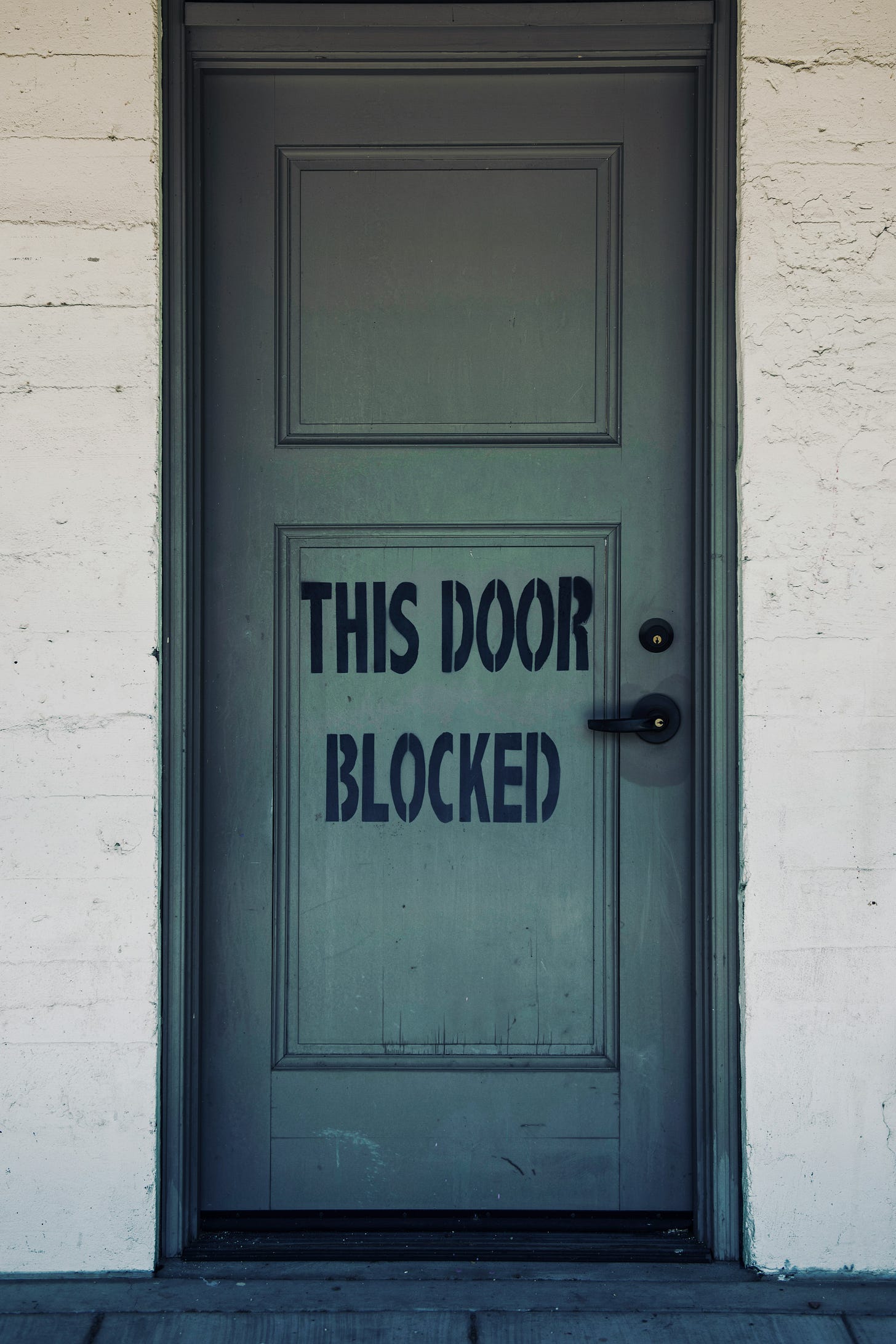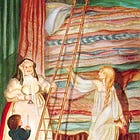Photo by Tim Mossholder on Unsplash
"You are not stuck where you are unless you decide to be."
— Wayne Dyer
I spent International Women’s Day in a room filled with bold, risk-taker women who had left certainty behind to chase something new. Some were pitching their startups, hoping to secure investment to accelerate their businesses. Others had recently walked away from high-powered careers, not to build more prominence but to live better.
There was this beautiful feeling in each of the people I met, a feeling of agency. No one was a victim of their circumstances- it was as if everyone had a shot of possibility before showing up. In a world that can feel heavy and daunting, that air of possibility was refreshing and energizing. Despite their very different circumstances and stories, each woman I met had made intentional choices—some were accelerating, some were working to slow down, and others were in a full-on pivot, but none of them were stuck.
Yes, I know I was at an International Women’s Day event for innovators and start-up founders, so you can argue such an event would attract a crowd of people who believed they could change their own circumstances and the world. That being so, this idea of how to break free from feeling stuck is what stuck with me afterwards.
But what about the people who feel like they can’t move? What about the ones who wake up every day feeling like they’re trapped in the same routine, the same job, the same expectations?
Feeling stuck isn’t just frustrating it’s exhausting. And the worst part? The longer you stay in that mindset, the harder it becomes to believe you can break free.
Why We Get Stuck
Feeling stuck isn’t about laziness or lack of ambition. In fact, even when you are stuck, you are still moving; it's like marching in place, exerting mental and emotional energy, but not making any progress. This cycle is often fueled by three things: the fear of change, perfectionism, and external validation.
The fear of change keeps you feeling stuck because the unknown is terrifying. Even if what you’re doing now isn’t working, at least it’s familiar. The risk of change feels greater than the discomfort of staying the same. Perfectionism keeps you stuck because the perfectionist tendency is that voice that says you must have the perfect plan, timing, and next step before you can move forward. And we all know perfection is impossible, so you never make a move. External validation keeps you stuck because you keep waiting for someone else to give you permission to make a move, whether it’s a boss, a loved one, or a parent. Disappointing someone else's expectations or the need for approval keeps you in the same place while knowing that no one else can break free from the cycle other than you.
The Science of Feeling Stuck: Learned Helplessness & Learned Optimism
Psychologist Martin Seligman introduced the concept of learned helplessness through a series of experiments in the 1960s. He found that when people (or animals) repeatedly experience situations where they have no control, they begin to believe that no action will change their circumstances, even when opportunities for change do arise. This mental trap is a key reason why people feel stuck.
But just like you can learn helplessness, you can also learn optimism.
Seligman later developed the theory of learned optimism, which showed that people can retrain their minds to recognize opportunities for change. Instead of seeing setbacks as permanent or personal failures, individuals who develop learned optimism begin to see them as temporary and changeable.
Going back to the people in the room at the DMZ pitch competition, I guarantee you that at some point, they found themselves at a crossroads, working on something that no longer resonated with them, spending time in roles that drained them rather than helping them thrive. But instead of staying the course, as so many people do, they made a different choice. They took control. They believed that the potential of something better was worth the risk.
And that’s the key: they weren’t waiting for permission. They weren’t waiting to feel ready. They simply decided to take the first step, not knowing exactly where it would lead.
How to Break Free
If you feel stuck in a cycle, breaking free is easier than you think because it doesn’t have to be a leap—you aren’t going to go from feeling stuck to pitching for $100K overnight. But you can disrupt the loop. It just requires you to stop marching in place and take one small step in the direction you want to go.
Seven Tactics To Help You Break the Cycle:
Treat roadblocks like questions – When you hit a roadblock, challenge your inner dialogue. Instead of “This is just how things are,” ask, “What is one thing I can change?”
Identify small wins – Recognizing even small successes helps rewire the brain to expect and believe in positive outcomes.
Take action despite doubt – Action disrupts the helplessness cycle. Even a minor shift, like applying for a new role, taking a class, or reaching out to a mentor, can shift your perception of control.
Stop asking for permission – No one is coming to rescue you. The shift you’re waiting for starts with you. Instead of waiting for someone to tell you it’s okay to make a move, decide for yourself.
Redefine progress – Progress isn’t always forward—it’s sometimes sideways, messy, and unexpected. Reframe what movement looks like so you don’t stay trapped by an outdated definition of success.
Get comfortable with discomfort – Moving in a new direction will feel awkward. Expect resistance—from yourself, from others. That discomfort isn’t a sign to stop; it’s proof you’re breaking the cycle.
Take action before you feel ready – Clarity, confidence, and security come from action, not the other way around. If you wait to feel ready, you’ll stay stuck. Often, as you move, the path will reveal itself.
You’re Not Actually Stuck
The truth is, you’re never truly stuck. You just believe you are. The cycle of feeling stuck is a compelling, exhausting story, but it is nonetheless a story. And like the founders in that room, you have the power to rewrite it.
The question is, will you take that first step?
Until next time, take care of yourself and those around you.
In partnership,
Nabeela
Like, Share & Comment!
If you found this post helpful and feel so inclined, please hit the ❤️ button at the top or bottom of this email to help others discover Re-Imagine Success.
And.. don’t be shy! Please let me know what you think by commenting. Your support means a lot!
If you would like to learn more about the world's unhealthy relationship with work, success, and achievement and discover ways to escape the burnout loop, check out some of my other posts below:

















Share this post